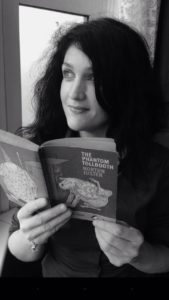The first time Yoella lays eyes on her young granddaughters, it is through the window panes of their Groningen home. Having travelled thousands of miles to see them, she is hiding in the gathering dusk of their front garden, concealed and mesmerised. In the prize-winning How to Love Your Daughter by Hila Blum, Yoella retraces the painful path that has led to estrangement between herself and her only child, Leah. Setting the reader the compelling task of unpicking her account and assessing the silences, Yoella’s story is one of intense introspection and all-consuming love.
This trip is the first, others will follow. A wander around the playground her granddaughters frequent, a rest on the bench her daughter watches them from. A spectre in the shadows, Yoella’s only physical act is to brush her hand along their garden fence.
Back home in Israel, she pieces their lives together via the internet. School, violin class, a family Instagram account, all the while fretting and sifting for clues. Daughters rarely abandon their mothers she says at one point.
‘Not even the most horrible or meanest or most hard-hearted mothers- they remain their daughters, are their daughters always and forever, there’s no undoing it. Why Leah?’
Gleaning an insight into what certainly appears to be an ‘undoing,’ takes us back several decades, to Yoella’s pregnancy and early motherhood, and the years before her husband and Leah’s father, Meir, died.
Yoella recalls the minutiae of her daughter’s schooldays. So many happy days, interlaced with stifling anxiety. How hard it is to keep her young daughter safe, always coming home without her coat, touching insanitary surfaces. As Leah heads into teenhood, the fear of germs and disarray morphs into the terrifying prospect of sexual predators.
Leah’s supposed neediness results in Yoella forever saving her ‘from herself.’ This is how motherhood is for her, she thinks, an impossible, breathtaking love, that has eradicated her previous life, including once cherished friendships.
Blum’s complex and engrossing novel zips back and forth in time. Snippets of Yoella’s recollections place her in a psychiatrist’s office, pregnant with Leah and distraught at the prospect of an ‘alien’ invader growing inside her. This mental fragility is set to resurface on a maternal journey catastrophically disrupted in Leah’s late teens, as her mother attempts to save her from herself one time too many.
All the while, perhaps predictably, Yoella’s own mother hovers at her shoulder, antithetical in her parenting style. Her presence joins that of fictional mothers that Yoella has absorbed from literature over the years. Characters from books by, among others, Anne Enright, Margaret Atwood and Alice Munro, have imprinted themselves upon her. She tells us of an Enright character who loved her children but didn’t know how to enact that love. ‘And there’s the rub,’ says Yoella, ‘the problem with love. She tried.’
A novel of deception (both of self and others), claustrophobic love, and the treacherous nature of memory, How to Love Your Daughter is the worthy winner of the Sapir Prize, translated from the original Hebrew by Daniella Zamir.
How to Love Your Daughter by Hila Blum is published by Bloomsbury, 272 pages.





